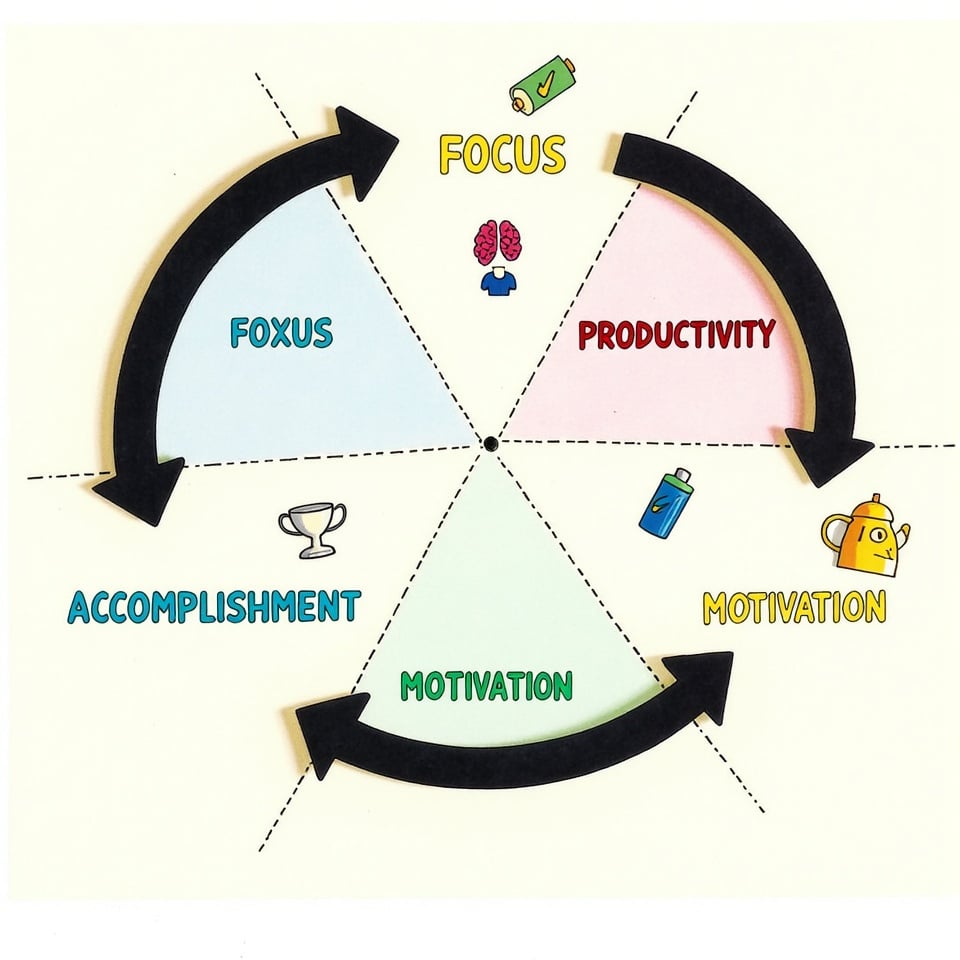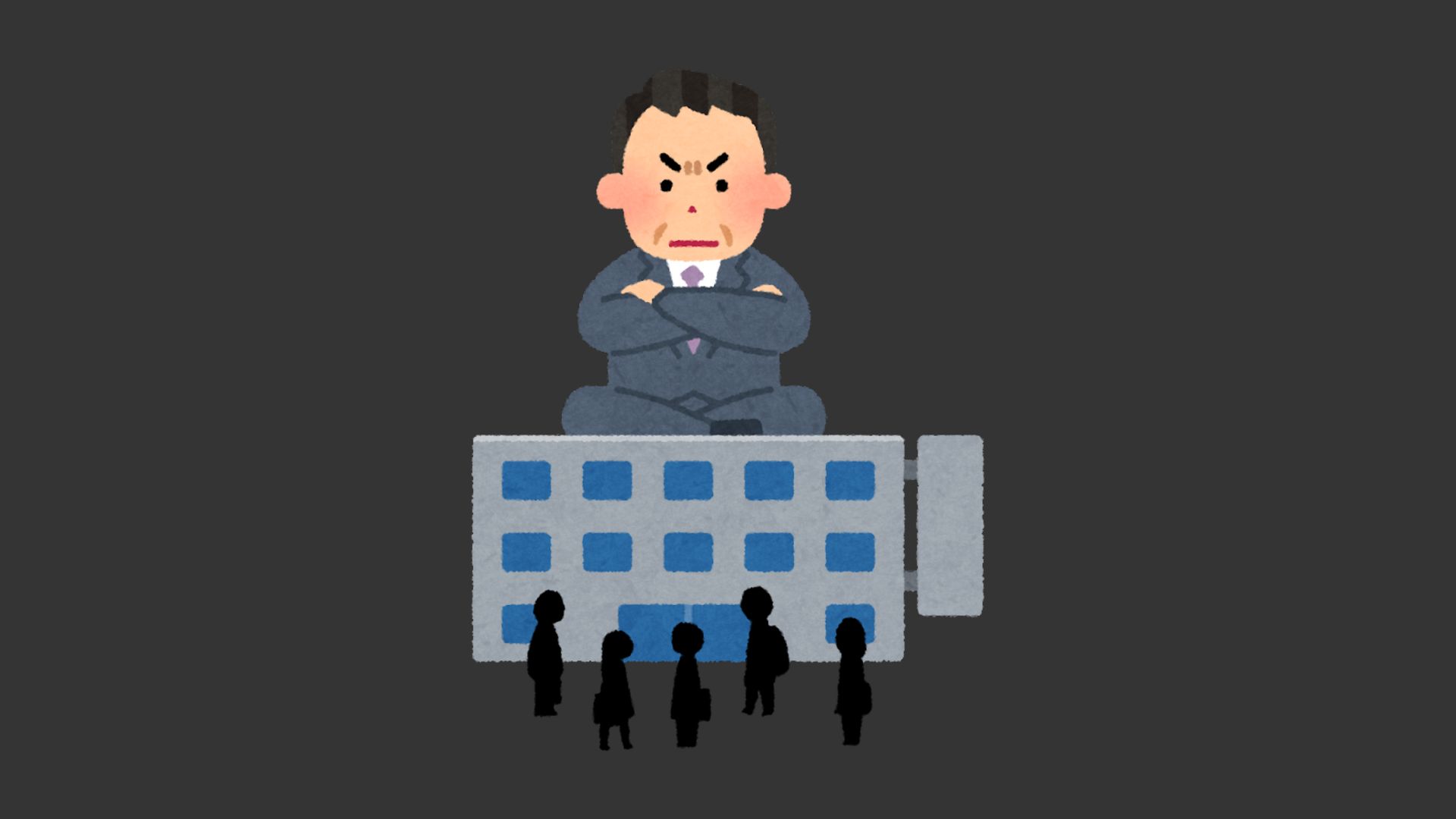Want to memorize faster and get more done in less time?
In this guide, you’ll discover the most effective memorization techniques backed by science.
These simple strategies can improve productivity, sharpen focus, and boost long-term recall.
Let’s dive straight in.
How Memorization Powers Productivity
Ever feel like your to-do list grows faster than your brain can keep up? You’re not alone.
But here’s the secret sauce: your memory isn’t just for trivia night—it’s your hidden productivity engine. When your brain holds onto the right information, you get more done, faster, with way less stress.
Think about it—when you remember key tasks, names, ideas, or where you left your charger (again), you don’t waste time retracing steps.
That mental sharpness? It saves minutes that stack into hours.
Strong memory skills help you focus on what matters, make quicker decisions, and avoid repeating work. Whether you’re managing a team, studying for exams, or running errands, recall helps you stay on top.
And no, this isn’t about having a photographic memory like Mike Ross.
It’s about training your brain to retain the useful stuff—like client preferences, project deadlines, or how to make your favorite spreadsheet formula work.
When memory is working for you, everything else starts to click.
What Memory Does for Daily Performance
Memory acts like your brain’s built-in assistant. It stores what you’ve learned, reminds you what to do next, and keeps track of past experiences so you don’t repeat mistakes.
Productivity isn’t just about working hard—it’s about working smart. And smart means remembering the right things at the right time.
Imagine preparing for a meeting. If you can recall the client’s name, project details, and previous notes instantly, you walk in confident and in control. That’s the power of mental retrieval—no frantic scrolling, no awkward silence.
Every small recall—whether it’s where you left your files or how to format a report—adds up.
The less you rely on searching for forgotten info, the more time and energy you preserve for actual work.
The Science Behind Recall and Retention
Here’s the brainy bit, but don’t worry—it’s simple. Your brain stores memories in different areas, like a massive mental filing system. The hippocampus plays a key role, especially in transferring short-term memories into long-term ones.
Think of it as your brain’s “Save” button.
Now, the trick isn’t just storing info—it’s keeping it accessible.
That’s where retrieval practice comes in.
The more you recall something, the stronger the memory becomes.
Repeating info aloud, teaching it to someone, or even writing it down reinforces those neural connections.
Also, spacing matters.
Spaced repetition—reviewing material at increasing intervals—boosts retention like crazy.
It’s used by memory champs, language learners, and top-performing students alike.
And let’s not forget sleep—your brain literally “files” memories while you rest.
No wonder you feel sharper after a good night’s sleep.
So, if you want to remember more and stress less, a little brain training goes a long way.
Ready to see how? Let’s dive deeper.
Verbal Memorization Techniques
Let’s be real—memorizing stuff can feel like trying to carry water in your hands. But when you use verbal techniques, it’s like pouring that water into a sturdy container.
These methods use sound, structure, and repetition to help your brain actually want to hold onto information.
Why verbal? Because your brain loves patterns and rhythms. And when you speak, sing, or simplify something into a catchy phrase, it naturally sticks.
Great news if you’re the kind of person who talks to themselves while working (we see you—and we’re right there with you).
Below are the most effective verbal memorization techniques. Try a few. Mix and match. See what clicks.
1. Chunking
Ever struggle to remember a long number like 7684593021? Yeah, same. But break it into chunks—768-459-3021—and suddenly it’s way easier.
Chunking is all about breaking big info into smaller, manageable parts.
Your brain can only hold so much at once (hello, cognitive load). So if you’re trying to memorize a speech, list, or steps in a process, divide it into logical groups.
Example: Instead of memorizing “Plan, Prioritize, Execute, Reflect, Optimize,” try “Plan-Prioritize” as Step 1, “Execute” as Step 2, and “Reflect-Optimize” as Step 3. Boom—instant clarity.
2. Acronyms and Acrostics
Quick quiz: What does “HOMES” stand for? If you said the Great Lakes—Huron, Ontario, Michigan, Erie, Superior—you’re already a pro at this.
Acronyms compress multiple ideas into one word. Acrostics do the opposite—create a phrase where each word starts with a key letter.
Try this: Need to remember the order of operations? Use “Please Excuse My Dear Aunt Sally” (Parentheses, Exponents, Multiply, Divide, Add, Subtract).
It’s weird, but it works. Your brain loves shortcuts.
3. Rhyming and Alliteration
Rhymes aren’t just for nursery rhymes—they’re brain fuel.
If it rhymes, it chimes, and your brain signs the dotted line.
Example: “i before e, except after c.” That little rhyme helps thousands of people spell correctly every single day.
Alliteration works the same way.
Say: “Powerful people prioritize personal productivity.” Notice how punchy it feels? That punch helps it stick.
4. Singing or Creating a Tune
Ever get a jingle stuck in your head for days? That’s the magic of music. It’s sticky.
Take whatever you’re trying to remember and set it to a familiar tune.
Alphabet song? Pure genius. You can even hum your own melody if you’re feeling creative.
Pro tip: Turn notes into a rap or chant. It doesn’t have to sound good—just memorable. The sillier, the better.
5. Recite and Repeat Aloud
Say it.
Say it again.
Say it with feeling.
Reciting info out loud engages more senses—speaking, hearing, and sometimes even gesturing.
This triple-whammy helps lock in what you’re learning.
Example: Studying for an exam? Don’t just read the notes—read them out loud like you’re explaining it to a friend.
Bonus points if you add dramatic flair.
6. Teach Someone Else
This one’s gold. If you can teach it, you’ve truly learned it.
Grab a friend, sibling, pet, or plant—seriously—and explain the concept like you’re the expert.
Teaching forces you to organize your thoughts and fill in gaps you didn’t even know were there.
It also builds confidence.
And confidence helps you remember even more.
Win-win.
7. Reread and Rewrite Your Notes
Old school? Yes.
Effective? Absolutely.
Rereading gives your brain another chance to recognize what’s important.
Rewriting forces it to reprocess the info instead of just scanning.
Think of it like refreshing a browser tab—except for your memory.
Write in your own words.
Highlight key parts.
Summarize.
Doodle in the margins if it helps.
You’re not just copying—you’re creating a personalized cheat sheet your brain actually wants to keep.
Visual Memorization Techniques
If verbal tricks aren’t your thing, don’t worry—some of us are wired to see information instead of saying it.
Visual memorization techniques tap into your brain’s natural love for images, colors, and spatial structure. It’s like giving your mind a map instead of a maze.
When you visualize information, it becomes more concrete.
You’re not just memorizing words—you’re building scenes in your head.
And trust me, your brain remembers scenes way better than random facts.
Let’s walk through the best visual methods to boost your memory.
8. Mind Maps
Think of a mind map as a visual spider web for your brain.
Start with one central idea in the middle of a page.
Then branch out with sub-topics, each connecting like little mental highways.
Use colors, symbols, even doodles to reinforce connections.
Example: Planning a project? Put the goal in the center, then branch out tasks, timelines, and team roles.
Suddenly, what felt like chaos becomes a clear picture.
Mind maps help you see relationships and recall them faster.
9. Storytelling and Linking
Your brain loves stories.
It’s wired for them.
So, turn facts into a journey.
Say you need to remember a list: milk, batteries, phone charger, and umbrella.
Visualize a story: You walk into a grocery store filled with milk. You slip, land on a pile of batteries, which powers up a giant phone charger shaped like a robot holding an umbrella.
Weird? Totally. But your brain eats that up.
Link each item in a narrative.
The sillier the better.
Your memory thrives on crazy visuals.
10. Flashcards
Yep, the old-school favorite.
Still unbeatable.
Why? Flashcards combine active recall with visual repetition.
You see a question or image, try to remember the answer, then check if you got it right.
Boom—your brain starts building stronger neural connections.
Make your own or use apps like Anki or Quizlet.
Add visuals and colors to spice them up. And don’t just cram—space them out with spaced repetition for maximum retention.
11. The Loci Technique (Memory Palace)
Welcome to Hogwarts-level memory magic.
The loci method—or Memory Palace—is about imagining a familiar space (like your home) and placing vivid images representing what you want to remember in specific spots.
Let’s say you’re remembering a speech.
Picture each key point sitting in a room of your house—an angry cat at your front door (Point 1), a bucket of ice cream in your kitchen (Point 2), and so on.
When you mentally “walk” through your house, you retrieve each point.
It’s fun. It’s powerful. And it works ridiculously well.
12. Peg System
This one’s like mental furniture for hanging info.
You create a fixed list of visual “pegs”—usually numbers paired with images (like 1 = bun, 2 = shoe, 3 = tree).
Then, you attach what you want to memorize to those pegs using silly, memorable scenes.
Example: Need to memorize “Cat, Book, Pizza”?
1 (bun) → A cat popping out of a hamburger bun
2 (shoe) → A book stuffed inside a smelly sneaker
3 (tree) → A tree growing pizza slices instead of leaves
Now you can recall the list in order, just by picturing those scenes.
13. Visualization and Association
Sometimes, you just need to turn boring words into strong visuals.
Instead of memorizing “Photosynthesis is the process of converting light into energy,” picture a leaf wearing sunglasses and sipping sunlight through a straw.
Boom—instant brain stamp.
Use association to connect new info with something you already know.
Meet someone named Rose? Picture them with a rose on their head.
Yes, it’s goofy. But guess who won’t forget her name?
Visualization makes info stick by turning the abstract into the unforgettable.
14. Color-Coded Notes (Rainbow Memory)
Who says your notes have to be boring black and white?
Using color helps your brain organize and remember information faster.
Assign colors to categories: blue for definitions, red for dates, green for examples, etc.
Highlight important parts, underline with different shades, or even color-code sections of mind maps and flashcards.
It’s not just prettier—it helps you recall info based on visual cues.
You’ll literally remember something “from the green part of the page.”
Strategic Techniques for Better Recall
You don’t need to cram like it’s finals week every time you want to remember something.
Instead, use smart strategies that work with your brain, not against it.
Strategic memorization is about how you practice recall, not just what you try to memorize.
These techniques help you remember faster, deeper, and longer. They don’t just boost memory—they boost confidence.
And once you see how easy they are to apply, you’ll wonder why you didn’t start sooner.
Let’s break down some of the most powerful strategies.
15. Spaced Repetition
This one’s a game changer.
Spaced repetition means reviewing information at increasing intervals—like today, tomorrow, in three days, next week.
Why? Because each time you almost forget something, reviewing it strengthens the memory.
Apps like Anki or RemNote do this automatically, but you can also DIY it with flashcards and a calendar.
It’s science-backed and memory-proven.
Forget cramming.
Think: space it out to lock it in.
16. Active Recall and Self-Testing
Reading isn’t enough.
Highlighting isn’t enough.
You’ve got to test yourself.
Active recall is when you close the book and try to pull the information from your brain without looking.
It’s tough—but that’s exactly why it works.
Write questions for yourself.
Use flashcards.
Cover your notes and explain them out loud.
The effort it takes to retrieve something actually cements it.
If it feels hard, you’re doing it right.
17. Group Related Ideas Together
Our brains love patterns and categories.
That’s why grouping similar ideas together works like mental Velcro.
Studying biology?
Group terms by systems—nervous, digestive, etc.
Memorizing vocabulary?
Sort by topic, emotion, or usage.
Even when planning tasks, group similar actions to reduce mental friction.
Chunking related ideas creates a stronger mental structure.
It’s like building shelves for your brain instead of tossing everything on the floor.
18. Create Emotional or Funny Associations
Boring info goes in one ear and out the other.
But tie it to a laugh—or a tear—and it sticks like glue.
Your brain remembers what makes you feel something.
So exaggerate.
Make it weird.
Make it funny or ridiculously dramatic.
Trying to memorize “mitochondria is the powerhouse of the cell”? Picture it as a ripped gym bro in sunglasses yelling, “Let’s make energy!” You’ll never forget it again.
Use emotion, use humor, use drama—whatever makes it unforgettable.
19. Use Personal Analogies
Make it about you.
When you relate new info to your own life, it becomes easier to understand and remember.
Learning about ecosystems? Compare it to your friend group.
Studying economics? Think about how you budget your allowance or paycheck.
If you’re learning abstract ideas, ask yourself: “How is this like something I already know?”
Personal connections turn vague ideas into relatable, memorable stories.
These strategies aren’t just smart—they’re sustainable.
You don’t have to work harder to remember.
Just work smarter.
When recall becomes part of how you think, productivity takes off without the burnout.
Habits That Support Memory and Focus
You can master every memorization trick in the book, but if your habits are working against your brain, it’s like trying to drive with the parking brake on.
Good memory isn’t just about what you study—it’s about how you live.
Your brain needs rest, movement, fuel, and focus to function at its best.
When you build habits that support mental clarity, you’ll find it easier to concentrate, recall information, and stay sharp without constant effort.
Let’s dig into the habits that quietly supercharge your memory behind the scenes.
20. Sleep on It
Ever wake up and suddenly remember something that totally stumped you the night before?
That’s your brain doing overtime while you sleep.
Sleep isn’t just for rest—it’s when your brain files what you learned.
During deep sleep, memories get processed and stored in long-term memory. Miss out on sleep, and your recall tanks.
Aim for 7–9 hours a night.
And if you’re learning something new, review it before bed.
You might just wake up smarter.
21. Move Your Body
Your brain loves it when you move.
Exercise boosts blood flow to the brain, delivering oxygen and nutrients it needs to stay alert and focused.
Even a 20-minute walk can improve your mood, energy, and memory function.
No need for a hardcore workout.
Dance, stretch, walk the dog—just get moving.
Think of it as brain fuel in motion.
Bonus: Movement reduces stress, and a calm brain remembers more.
22. Stay Hydrated and Eat Brain-Friendly Food
Your brain is 75% water.
So when you’re dehydrated, guess what suffers first? Yep—memory and focus.
Drink water regularly throughout the day, especially when you’re learning or working.
Don’t wait until you’re thirsty—that’s your brain waving a white flag.
And fuel up with brain-boosting foods:
- Omega-3s from fish or walnuts
- Antioxidants from berries
- Leafy greens like spinach
- Dark chocolate (yes, seriously)
Ditch the junk and give your brain the premium stuff.
23. Avoid Multitasking
Multitasking feels productive.
It’s not.
Your brain isn’t built to juggle tasks—it’s built to switch between them.
And every switch drains focus and memory power.
When you try to learn something while scrolling your phone or checking emails, your recall drops.
BIG TIME.
Instead, go all-in on one task at a time.
Give it your full attention.
You’ll finish faster and remember more.
Trust me, your brain will thank you.
Good habits create the environment where your memory can thrive.
They’re like daily upgrades to your mental operating system—quiet, consistent, and powerful.
Offloading What You Don’t Need to Memorize
Here’s the truth: you don’t need to memorize everything.
In fact, trying to remember every little thing is a fast track to burnout.
Your brain has limits—and clutter kills clarity.
That’s why smart people offload.
They free up brainpower by storing non-essential info in systems they trust.
The goal? Keep your brain sharp for the important stuff—like creative thinking, decision-making, and solving problems.
Let’s look at two powerful ways to do that.
Use Note-Taking Systems
Your notebook is your second brain—treat it like one.
Whether you’re using an old-school journal, sticky notes, or apps like Notion, OneNote, or Evernote, the key is consistency.
Choose one system and make it your go-to place for storing thoughts, tasks, ideas, and reminders.
But don’t just scribble randomly. Use formats that help you find and review information quickly.
Try these simple approaches:
- Bullet points for clean summaries
- Headings and subheadings for structure
- Checklists for tasks and action items
- Daily logs to track progress
When your notes are clear, your mind stays clear.
Organize Digital Tools to Reduce Memory Load
Let your tech do the remembering, so you can do the thinking.
Use digital calendars for appointments, to-do lists for tasks, password managers for login info, and cloud storage for documents.
Automate reminders.
Set recurring tasks.
Sync across devices.
Try tools like:
- Google Calendar for scheduling
- Todoist or TickTick for tasks
- Trello for project tracking
- Notion for everything in one place
It’s not cheating—it’s smart.
Offloading frees up your brain’s RAM, so you can focus on the stuff that actually matters.
Your brain is for ideas, not storage.
Think of offloading as decluttering your mental desk—making room for focus, flow, and the kind of memory that really drives productivity.
Final Thoughts on Memorization and Productivity
Not every task needs the same memory strategy.
Use verbal techniques when words matter, visual tools when images help, and strategic systems to lock it all in.
Offload what you don’t need to keep in your head—and focus on what moves you forward.
Pick one method.
Try it today.
Keep it simple, stay consistent, and your memory will do the rest.







